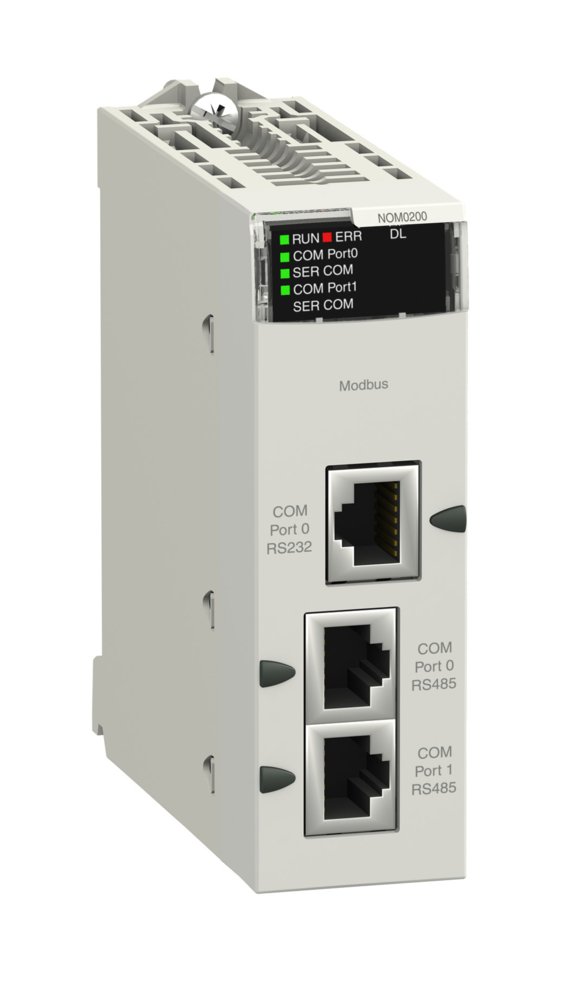1. EXECUTIVE SUMMARY
- CVSS v3 8.6
- ATTENTION: Exploitable remotely/low skill level to exploit
- Vendor: Schneider Electric
- Equipment: Modicon BMXNOR0200H
- Vulnerabilities: Improper Check for Unusual or Exceptional Conditions, Improper Access Control
2. RISK EVALUATION
Successful exploitation of these vulnerabilities could allow remote code execution or cause a denial-of-service condition.
3. TECHNICAL DETAILS
3.1 AFFECTED PRODUCTS
Schneider Electric reports these vulnerabilities affect the following products:
- BMXNOR0200H Ethernet/Serial RTU module, all firmware versions
The BMXNOR0200H Ethernet/Serial RTU module is part of the Modicon X80 I/O product category. Modicon X80 I/Os are a common platform of modules for Modicon M580 and M340 PLCs.
3.2 VULNERABILITY OVERVIEW
3.2.2 IMPROPER CHECK FOR UNUSUAL OR EXCEPTIONAL CONDITIONS CWE-754
An improper check for unusual or exceptional conditions vulnerability exists that could cause a denial-of-service condition when truncated SNMP packets on Port 161/UDP are received by the device.
CVE-2019-6813 has been assigned to this vulnerability. A CVSS v3 base score of 7.5 has been calculated; the CVSS vector string is (AV:N/AC:L/PR:N/UI:N/S:U/C:N/I:N/A:H).
3.2.2 IMPROPER CHECK FOR UNUSUAL OR EXCEPTIONAL CONDITIONS CWE-754
An improper check for unusual or exceptional conditions vulnerability exists that could cause disconnection of active connections when an unusually high number of IEC 60870-5-104 packets are received by the module on Port 2404/TCP.
CVE-2019-6831 has been assigned to this vulnerability. A CVSS v3 base score of 7.5 has been calculated; the CVSS vector string is (AV:N/AC:L/PR:N/UI:N/S:U/C:N/I:N/A:H).
3.2.3 IMPROPER ACCESS CONTROL CWE-284
An improper access control vulnerability exists that could allow the execution of commands by unauthorized users when using the IEC 60870-5-104 protocol.
CVE-2019-6810 has been assigned to this vulnerability. A CVSS v3 base score of 8.6 has been calculated; the CVSS vector string is (AV:N/AC:L/PR:N/UI:N/S:C/C:N/I:N/A:H).
3.3 BACKGROUND
- CRITICAL INFRASTRUCTURE SECTORS: Commercial Facilities
- COUNTRIES/AREAS DEPLOYED: Worldwide
- COMPANY HEADQUARTERS LOCATION: France
3.4 RESEARCHER
The VAPT Team, C3i Center, IIT Kanpur, India, reported these vulnerabilities to Schneider Electric.
4. MITIGATIONS
Schneider Electric recommends users set up network segmentation and implement a firewall to block all unauthorized access to Port 2404/TCP and SNMP Port 161/UDP.
CISA recommends users take defensive measures to minimize the risk of exploitation of this vulnerability. Specifically, users should:
- Minimize network exposure for all control system devices and/or systems, and ensure that they are not accessible from the Internet.
- Locate control system networks and remote devices behind firewalls, and isolate them from the business network.
- When remote access is required, use secure methods, such as Virtual Private Networks (VPNs), recognizing that VPNs may have vulnerabilities and should be updated to the most current version available. Also recognize that VPN is only as secure as the connected devices.
CISA reminds organizations to perform proper impact analysis and risk assessment prior to deploying defensive measures.
CISA also provides a section for control systems security recommended practices on the ICS webpage on us-cert.gov. Several recommended practices are available for reading and download, including Improving Industrial Control Systems Cybersecurity with Defense-in-Depth Strategies.
Additional mitigation guidance and recommended practices are publicly available on the ICS webpage on us-cert.gov in the Technical Information Paper, ICS-TIP-12-146-01B–Targeted Cyber Intrusion Detection and Mitigation Strategies.
Organizations observing any suspected malicious activity should follow their established internal procedures and report their findings to CISA for tracking and correlation against other incidents.
No known public exploits specifically target these vulnerabilities.
Source:
